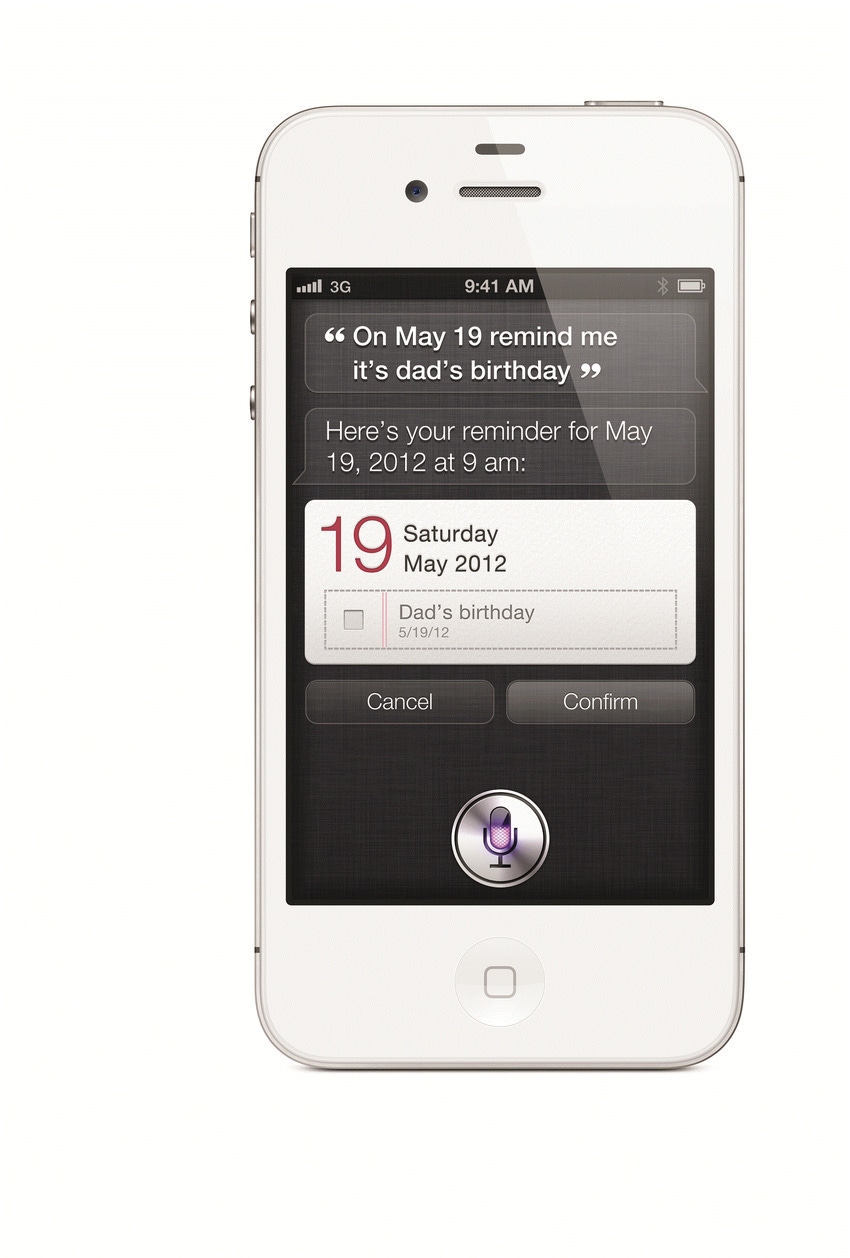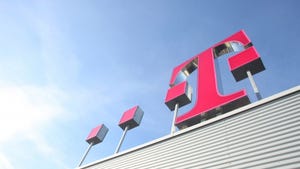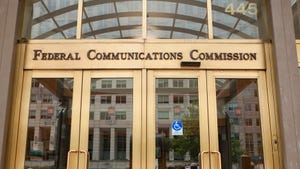What does the industry make of the iPhone 4S?
Apple teased the masses ahead of the launch of its newest handset – with the only detail being divulged being the title of the event: “Let’s Talk iPhone”. As with most Apple launches, the technology press and blogger community were fast spreading rumours about what new features the device would have. Would it be called the iPhone 5? And what would it look like? On Tuesday the Cupertino-based company unveiled the iPhone 4S – an upgrade to the iPhone 4, with a new chip and enhanced voice recognition features but largely the same appearance as its predecessor.
October 5, 2011

Apple teased the masses ahead of the launch of its newest handset – with the only detail being divulged being the title of the event: “Let’s Talk iPhone”. As with most Apple launches, the technology press and blogger community were fast spreading rumours about what new features the device would have. Would it be called the iPhone 5? And what would it look like? On Tuesday the Cupertino-based company unveiled the iPhone 4S – an upgrade to the iPhone 4, with a new chip and enhanced voice recognition features but largely the same appearance as its predecessor.
Here’s what the telecoms community made of Apple’s new launch:
“Apple has been a victim of the hype that surrounds all of its announcements. With so many false rumours about what it would announce, it was almost inevitable that the announcement itself would disappoint,” said Ovum chief analyst Jan Dawson.
“Apple introduced a new ‘personal assistant’ feature on the iPhone 4s, which is based on its acquisition of Siri. While similar to other voice recognition apps in the market such as Vlingo, Siri differentiates itself by being baked into the fabric of the OS, and by its use of natural language processing. The demo of the feature certainly gave the announcement event a wow factor it was otherwise lacking, but it feels like another Facetime in that regard – something that makes for good demos, but which few people will actually use in practice.”
David McQueen, principal analyst at Informa Telecoms & Media, was also sceptical about just how much of an improvement over the iPhone 4 the new model really is.
“The iPhone 4S looks the same, with similar industrial design, screen size and user interface but just with a little better innards. Having a faster dual-core processor helping improve battery life, 1080p HD video recording, an 8-megapixel camera and the ability to roam between CDMA and GSM networks may float some people’s boat, but that may not be enough to seduce all Apple lovers to upgrade.”
But Gartner’s research VP for consumer technologies and markets, Carolina Milanesi believes the new device actually ticks a lot of boxes in terms of user requirements.
“If you call the announcement disappointing I think you are looking at this in a superficial way. Look at the list of things you get and most were on peoples’ wish list:
Better camera – not just an 8-megapixel, but better technology; Full HD video; Faster processor; Antennagate resolution; Siri. And the lack of LTE still makes sense to me considering the little interest outside the US.
The lack of NFC has to do to the immature payment ecosystem and I think Apple will want all the ducks in a row before rolling this out.
“For me the two surprises were CDMA + GSM. This is a smart move to leverage economies of scale and cut down cost; and leaving the 3GS in the market. I do wonder however if the hype got to be too big and Apple now suffers from the fact that unless they pull a rabbit out of the hat every time they disappoint.”
The launch will also inevitably mean that many businesses will have to support the device in their IT environments, as the trend of users bringing their own devices into the workplace continues to grow.
Dave Everitt, general manager EMEA, Absolute Software, said:
“If CIOs weren’t worried about consumer devices in businesses before, they certainly will be now. The new features in the iPhone 4S such as the dual antenna for faster data transfer and the beta Siri app will make it very appealing for business use – both for employers rolling out ‘official’ new devices, and employees using their own gadgets for improved performance over those issued by their company.
Whilst fans may be disappointed that Apple have not announced the iPhone 5, the affordability of the mid-range 4S, alongside its processing power, is likely to cause a greater influx of new iPhones into the workplace.”
Ahmed Datoo, chief marketing officer at Zenprise, added: “There’s a bring-your-own-device phenomenon going on and I expect on October 12th, admins are going to see plenty of people trying to connect with iOS 5. We recently worked with a customer running 10,000 devices to examine which systems were being used, and 80 per cent were on iOS.
“In short, embrace iOS 5.0, it’s going to make your life easier in the long run”.
But what impact will the launch of the iPhone 4S have on the competition? James Lamberti, VP global research & marketing at InMobi, said the company has been undertaking research into the impact the iPhone 4S will have on the market.
“Ahead of yesterday’s Apple event, we wanted to ascertain consumer take-up of an iPhone 5 versus an iPhone 4 update. We found that more than one in ten current mobile users were likely to purchase an iPhone 4S, with a quarter of iPad users saying that they would do so, and nearly one in five BlackBerry users.”
“We anticipate that Android and RIM will lose market share, but at a much slower rate than they would have experienced should iPhone 5 have been announced. Over the last quarter, we’ve seen Apple lead the market in terms of mobile advertising impressions and we anticipate that yesterday’s event will continue that trend.”
Gil Bouhnick, director of mobility solutions at ClickSoftware, added:
“Once the disappointment about the missing iPhone 5 calms down, iPhone 4S sales will be solid. Android’s momentum will not be stopped by the iPhone 4S but a closer look at iOS5 and the new price tags for older iPhone models, shows that the new capabilities might actually deliver a death blow to BlackBerry’s domination at the enterprise and Microsoft’s aspirations to lead the way with the new WP7 Mango release.
“There are a few basic features that I was desperately waiting for. The biggest one is tasks integration with Microsoft Exchange and Outlook – this one is coming to iOS5, which means that you can write down tasks (using a new app called: Reminders) and automatically synchronize them with either Exchange, Outlook, iCal, or Google Tasks.
“Ironic that so close to the release of WP7 Mango, that also includes Tasks, and Exchange improvements, and other “enterprise-ready” improvements, comes Apple and crushes, once again, Microsoft’s aspirations to take over enterprise mobility.”
And the impact on networks is another factor that the telecoms industry will have to consider, according to Stephen Rayment, CTO at BelAir Networks.
“Amongst the many promises of the iPhone 4S, one thing’s for certain: It will place greater strain on mobile networks that are already over capacity in busy or crowded areas,” said Rayment.
Mervyn Kelly, EMEA marketing director at Ciena, added:
“The launch of the iPhone 4S is great news for consumers and Apple lovers and brings the promise of an enhanced customer experience and exciting new video applications.
“However, fulfilling the promise of a superior customer experience depends greatly on the network performance and that is making carriers rethink their network strategy and look for more efficient ways to support data growth.”
So the responses are mixed – there’s one camp that lauds Apple’s efforts, summarised Francis Sideco, senior principal analyst, wireless communications, for IHS:
“As Apple always does, the company selected features for the iPhone 4 that are designed to deliver a superior customer experience, rather than to provide technology for technology’s sake. Because of this, Apple declined to offer an LTE-enabled iPhone that would have been more expensive, larger and more power hungry—and instead opted to introduce a device that delivers nearly the same wireless data speed, but with a superior user experience.”
But there’s another camp that believes that the new handset will not be enough to stem the growth of competing smartphones, as Malik Saadi, principal analyst at Informa Telecoms & Media, explained:
“In light of all these super-smartphones coming to market from the likes of HTC and Samsung, the iPhone is no longer a champion in terms of user experience.”
Read more about:
DiscussionAbout the Author(s)
You May Also Like








.png?width=300&auto=webp&quality=80&disable=upscale)


_1.jpg?width=300&auto=webp&quality=80&disable=upscale)


.png?width=800&auto=webp&quality=80&disable=upscale)